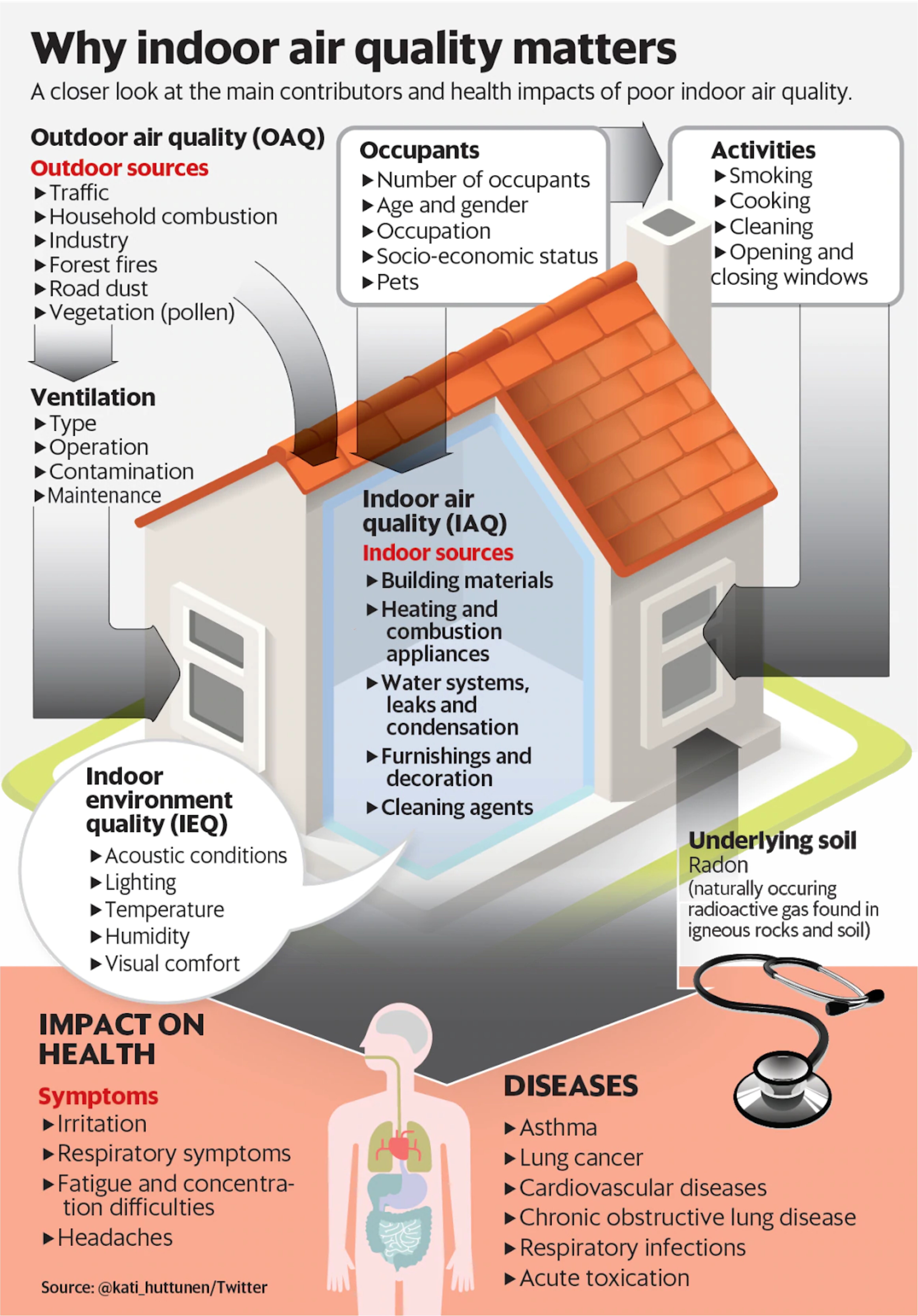Biodiversity & Environment
Indoor Air Pollution
- 07 Sep 2019
- 5 min read
According to the Centre for Science & Environment (CSE), the three-year average levels of PM 2.5 atmospheric particulate matter (with a diameter less than 2.5 microns) during 2016-18 were 25% lower than the 2011-14 baseline (three-year average).
- Though the number of days with severe PM 2.5 levels have come down since 2015, Delhi still needs to cut pollution levels by 65% to meet global air quality standards.
Indoor Pollution
- The environmental air pollution and indoor air pollution are inseparably linked, as people spend around 90% of their time staying indoors.
- According to the State Of Global Air Report 2019, an estimated 846 million people in India were exposed to household air pollution in 2017. That forms around 60% of the country’s population.
- Gases and particles in the air can be divided into two categories: primary and secondary sources.
- Primary gases and components are emitted directly from sources that include the building itself, consumer products (e.g. personal care products, cleaning or cooking products, equipment and office products, off-gassing from items brought into the home), microbial and human metabolic emissions, and also the entry of outdoor air into the house through openings, ventilation systems or leaks.
- Secondary gases are produced through chemical reactions in the air. For e.g, cooking releases a large amount of VOCs (Volatile Organic Compounds), CO2 (Carbon Dioxide), NOx (Nitrogen Oxide) and other particles. VOCs and NOx react in the presence of sunlight to form ozone.
- The ground-level ozone not only has long-term effects on human health but is also a critical pollutant in smog.
Harmful Effects of Indoor Pollution
- Exposure to ground-level ozone increases a person’s likelihood of dying from respiratory disease, specifically cardiovascular diseases.
- In 2017, exposure to PM 2.5 was the third leading risk factor for type 2 diabetes-related deaths and disability.
- Nitrogen oxide (NOx) can cause inflammation of the airways. Long-term exposure can diminish lung function and increase susceptibility to allergens.
- Particulate matter from burning cigarettes, mosquito coils in a closed indoor environment can lead to increased cases of cardiovascular and respiratory diseases, following prolonged exposure.
Related Findings
- Cooking, cleaning, and other routine household activities generate significant levels of volatile and particulate chemicals
- The purpose of the experiment HOMEChem (House Observations of Microbial and Environmental Chemistry) conducted by The University of Texas was to identify the sources of chemical oxidants in the indoor environment, and how they were affected by human activities and changes in light conditions.
- There are two main associated issues that were identified are:
- First, the issue of solid fuel use in homes- a problem associated with rural households, and
- Second, the issue of exposure related to cooking, smoking, use of incense and/or mosquito coils, consumer products, infiltration of outdoor air, etc. This has more relevance in urban households, offices and public spaces.
- There are two main associated issues that were identified are:
Way Forward
- Simple measures such as, cooking with appropriate ventilation (especially when frying food), avoiding the use of incense sticks and candles, room fresheners, etc., (whenever possible), and restricting the infiltration of outdoor air, especially on days when pollution levels are high can help to keep a check on indoor air pollution in urban households.
- It is important to note that buildings in India often have natural ventilation and tend to be leaky. Special care is needed to fully seal the building.
- There is a big gap in the lack of a standard to measure indoor air pollution that needs to be resolved. In India, indoor air is as bad as outdoor air.
- Household air pollution needs to remain a focus for policy action, especially in Asia and Africa, where the use of solid fuel for residential cooking and heating is still very high.







